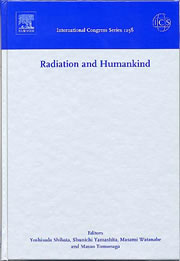|
Preface Nuclear power plants, which were built to harness atomic energy peacefully, have supplied the world with enormous quantities of electric power, but the Chernobyl Nuclear Power Plant accident of 1986 contaminated vast areas in Belarus, Russia and Ukraine where about seven million people were living. The staff of Nagasaki University School of Medicine (now Nagasaki University Graduate School of Biomedical Sciences)—and particularly specialists at the Atomic Bomb Disease Institute—have been engaged for many years in research on the health effects of exposure to radiation from the atomic bombs, the Chernobyl accident and nuclear tests at Semipalatinsk, as well as the medical care of atomic bomb survivors and health examinations of people around Chernobyl and Semipalatinsk. The use of radiation has extended to various fields including medicine, agriculture, science and engineering, and atomic energy has come to comprise a significant portion of the electric power generated in several advanced countries. The effects of radiation on human health have been investigated in atomic bomb survivors for more than half a century, and the knowledge thus obtained has greatly enriched our understanding. The Chernobyl accident, however, indicated that exposure to low doses of radiation affects human health in a way different from that observed in atomic bomb survivors. Recognizing the importance of research on low dose or low dose rate radiation, we proposed the launching of a project entitled ‘‘The International Consortium for Medical Care of Hibakusha and Radiation Life Science’’ as a 21st Century COE Program. Our aim was to create an international base for studies on the health effects of low dose or low dose rate radiation from the viewpoint of epidemiology, molecular epidemiology and radiation biology. This proposal was accepted in October 2002 by the Japanese Ministry of Education, Culture, Sports, Science and Technology, and the inaugural symposium was held on 21–22 February 2003 at the Pompe van Meerdervoort Hall, Nagasaki University School of Medicine. Two 1-day satellite meetings were held before and after the symposium as well. More than 100 scientists, including 18 scientists from seven countries overseas, participated in the symposium and satellite meetings and engaged in intensive discussions on the above issues. We are confident that the project has been launched successfully. The present volume is a compilation of 38 papers presented at the symposium and the two satellite meetings. We would like to express sincere thanks to all the contributors for these interesting and valuable papers. If this volume helps to inspire readers to conduct further investigations into the effect of radiation on human health, especially that of low dose or low dose rate radiation, then our efforts will be amply rewarded. The Editors |
